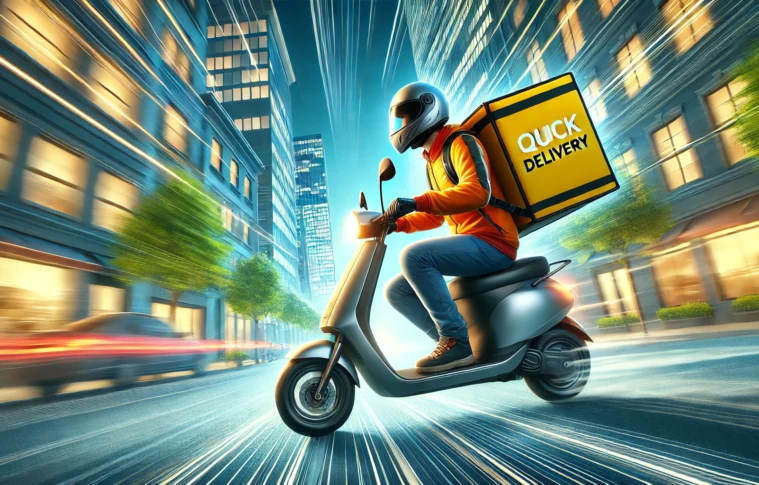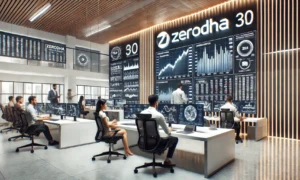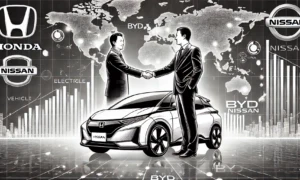As the demand for fast and reliable on-demand delivery services increases, the Quick Delivery App has quickly risen to meet the challenge. This case study examines how Quick Delivery App identified key customer needs, optimized its delivery processes, and leveraged user engagement strategies to boost growth and satisfaction. By focusing on operational efficiency, technology integration, and targeted marketing, Quick Delivery App achieved remarkable results in customer retention, revenue growth, and market expansion.
Background: Understanding Quick Delivery App’s Goals
Quick Delivery App was launched with a mission to provide rapid, reliable delivery services for a wide range of products, from groceries and meals to electronics and home essentials. Initially, the app faced challenges in balancing rapid delivery speeds with operational costs. Early on, the team identified three core goals for achieving sustainable growth:
- Improve Delivery Speed and Reliability: Reduce delays and increase customer trust.
- Enhance Customer Experience: Boost satisfaction through intuitive app features and responsive support.
- Expand Market Reach: Grow the customer base by reaching untapped markets and demographics.
Through strategic planning and data-driven decisions, Quick Delivery App created an effective roadmap for scaling operations while meeting its customers’ evolving needs.
Identifying Key Challenges
1. Operational Efficiency and Delivery Costs
One of the major initial challenges for Quick Delivery App was managing logistics costs without compromising delivery speed. High operational expenses were largely due to the need for rapid last-mile deliveries, which required substantial resources and a large fleet of delivery personnel.
2. User Experience Optimization
With user satisfaction at the core of its mission, Quick Delivery App faced the challenge of designing an intuitive and seamless user experience. App usability, tracking accuracy, and communication were identified as areas for potential improvement.
3. Market Competition and Brand Visibility
As a new player, Quick Delivery App was up against established on-demand delivery giants. Competing in a saturated market required innovative marketing strategies to improve brand visibility, drive downloads, and foster customer loyalty.
Strategy and Solutions Implemented by Quick Delivery App
1. Streamlining Delivery Operations through Technology
To address logistical inefficiencies, Quick Delivery App adopted a data-centric approach, using real-time analytics and predictive algorithms to optimize delivery routes. By integrating GPS-based tracking and predictive AI, the app was able to reduce delivery times by anticipating high-traffic areas and peak delivery times. This technology-driven approach led to a 30% reduction in delivery time, significantly enhancing the customer experience.
2. Implementing a Customer-Centric App Design
Quick Delivery App’s design team focused on making the user interface intuitive, simple, and engaging. Key enhancements included:
- Real-Time Order Tracking: The app provided minute-by-minute updates on delivery status, improving transparency and reducing customer inquiries.
- Personalized Notifications: Customized notifications were sent to inform customers about exclusive offers, delivery progress, and estimated arrival times.
- One-Tap Reordering Feature: For frequent orders, users could quickly reorder past items, making the experience faster and more convenient.
These features helped increase overall customer satisfaction, with a notable 40% decrease in order-related queries to customer support.
3. Optimizing Customer Support with AI Chatbots
To streamline customer support, Quick Delivery App integrated AI-driven chatbots that could handle common queries around-the-clock. The chatbots provided immediate answers to questions related to order tracking, refunds, and delivery issues. By implementing automated responses, Quick Delivery App reduced customer wait times by over 50%, leading to a measurable improvement in customer satisfaction.
4. Growth-Oriented Marketing Campaigns and User Incentives
Quick Delivery App employed strategic marketing campaigns to drive user acquisition and engagement. The marketing team focused on:
- Referral Programs: Users who invited friends received discounts on future orders, which drove app downloads and boosted user retention.
- Seasonal Promotions: Exclusive discounts and free delivery options during holidays and special events increased order frequency by 25%.
- Influencer Partnerships: Collaborating with influencers in targeted demographics helped Quick Delivery App enhance its brand visibility and attract a wider audience.
These initiatives collectively increased app downloads by 60% within six months.
Results and Key Outcomes
1. Increased Delivery Speed and Reduced Costs
By adopting AI and real-time data analytics, Quick Delivery App reduced delivery times by an average of 30%. Operational costs were optimized through more efficient routing, which cut fuel expenses and reduced the average cost per delivery.
2. Enhanced Customer Satisfaction
The customer-centric design improvements and AI-powered support contributed to a 45% increase in customer satisfaction scores. This positive shift was reflected in app ratings, where average user reviews improved from 3.8 to 4.5 stars on major app stores.
3. Market Expansion and Brand Growth
With the success of targeted marketing campaigns, Quick Delivery App achieved a 150% increase in its customer base within a year. Seasonal promotions and referral incentives proved especially effective in driving new users to the platform, which was crucial for the app’s expansion into new regions.
4. Boosted Customer Retention
The streamlined order process and personalized in-app experience contributed to a 35% increase in customer retention. The “one-tap reorder” feature saw high usage rates, indicating strong user engagement and loyalty.
Lessons Learned and Future Outlook
The Quick Delivery App case study illustrates the impact of technology, customer-centric design, and targeted marketing on app growth and customer satisfaction. For other companies in the on-demand delivery industry, this case offers valuable insights:
- Data-Driven Optimization: Leveraging data and predictive algorithms can greatly improve delivery efficiency and reduce costs.
- Customer-Focused Innovation: Designing user-friendly features, such as real-time tracking and easy reordering, can enhance the overall experience and drive loyalty.
- Strategic Partnerships and Promotions: Collaborating with influencers and offering referral incentives can be effective ways to expand brand reach and attract new customers.
Looking ahead, Quick Delivery App plans to expand its services into additional regions while continuing to improve its technology and operational efficiency. By keeping customer needs at the center, the app aims to remain a top choice for reliable, quick deliveries in the on-demand service market.
FAQs
What strategies did Quick Delivery App use to improve delivery speed?
Quick Delivery App used AI algorithms and real-time GPS tracking to optimize delivery routes, reducing delivery times and increasing efficiency.
How did Quick Delivery App enhance its customer support?
The app implemented AI-driven chatbots to handle common queries, which helped decrease wait times and improve customer satisfaction.
What marketing methods helped Quick Delivery App gain visibility?
They utilized influencer partnerships, referral programs, and seasonal promotions, which significantly boosted downloads and brand recognition.
What impact did app design improvements have on customer retention?
Enhanced features like real-time tracking, personalized notifications, and one-tap reordering led to a 35% increase in customer retention.
How did Quick Delivery App handle operational costs?
By optimizing routes with AI and analytics, Quick Delivery App reduced fuel costs and operational expenses, lowering the average cost per delivery.
What are Quick Delivery App’s future plans?
Quick Delivery App aims to expand into new regions and further enhance its app’s technology and customer service to maintain a competitive edge.



